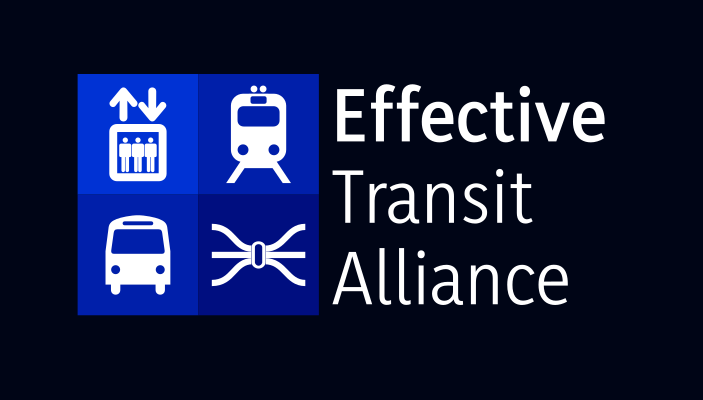Too Little Overhead: ETA Urges MTA to Order Regionally Compatible M9As
The MTA’s current plan to replace the Long Island Railroad’s aging M3 cars with M9A cars might seem good on paper, but includes a critical flaw that has the potential to seriously hamper future plans for decades to come. Make no mistake, while they have served their role well, the 40+ year old, wood-panelled M3 cars need to go. On the surface, replacing them with a variant of a car already in service might seem to make sense. However, not only are the proposed M9As far more expensive than necessary, they pose a fundamental challenge to commuter rail modernization: the inability to run on overhead electrification as well as third rail. Put simply, all new cars that the MTA purchases should come with the ability to through-run on all lines across the region. This means including the ability to operate on cheaper to install and maintain overhead catenary, ideally along the lines of ETA’s M10 proposal.
The M3 cars are over 40 years old and need to be replaced [1].
As ETA has discussed at length, the main thrust of all commuter rail planning over the next few decades should be through-running, which is an essential step to the region’s future economic growth, mobility, and decarbonization. This requires a fleet that can both operate from New York to New Jersey and fit in the tight tunnels leading to Grand Central Madison. Of course, it would be wasteful to replace all rolling stock at once just for through-running capabilities. But when rolling stock is due for replacement, newly ordered cars should be able to run anywhere in Greater New York. In the case of replacing M3s, that means procuring cars that can use both overhead wire (operating at both 25 Hz and 60 Hz) and third rail.
Just as importantly, overhead wire capability enables electrifying more MTA commuter rail service. Electrification is far cheaper with catenary than third rail for both construction and maintenance. Purchasing trains that can run on both third rail and catenary would allow the MTA to electrify the remaining unwired branches of both the LIRR and Metro-North far more cost-effectively while using only one type of train. The MTA could save money by pairing replacements of the aging DC substations that feed its third rail with AC catenary, which requires far fewer substations.
If it is too late to fully modify this order, one potential solution would be to specify that the cars bought in this order must have provisions for the modifications needed to use overhead wire, including 25 Hz capability, or the ability to insert a car containing this equipment similar to the Alstom-built NJ Transit Multilevel IIIs, allowing for system-wide operation at a future date.
It would be best for the MTA to order cars like Metro-North’s M8, which can run on catenary power (top) or on either over- or under-running third rails (shoe seen at bottom) [2].
Even ignoring these incompatibilities with future plans, the proposed M9As are also far more expensive than other trains. The M9As purchased in the initial order will cost $281,000/m [3], representing a further cost escalation over even the single-level diesel procurement we’ve previously criticized. Electric Multiple Units (EMUs) like the M9A are usually far cheaper than alternatives, a pattern which until recently had been true even for the MTA. Metro-North’s M8s came in at an internationally competitive cost of $112,000/m [4], while the more recent M9s cost more at $163,000/m [5], still far less than the proposed M9As. These cost increases mean more funding needs to be funneled to maintaining existing service, precluding service expansions and other investments.
These cost increases come from an increasing divergence from international rolling stock norms. The M9As come from an evolution of previous MTA designs, and neglect to use lighter-weight bodies or use international rolling stock platforms, now permitted through FRA alternative compliance, requiring unnecessary custom design and manufacturing work. These heavier designs limit performance, increase vehicle and track maintenance costs, and make adding a heavy 25 Hz transformer substantially more challenging, offering no corresponding benefits in return.
The MTA should procure far cheaper rolling stock capable of operating under wire by leveraging standard platforms customized for local loading gauge and electrification constraints. We’ve proposed the M10 as an alternative following these guidelines, and NYU-Marron’s Momentum report also proposed a similar Apollo pilot design. International designs already encompass a greater breadth of equipment with more capability and flexibility. ETA strongly urges the MTA to seriously consider similar options before committing to procuring the expensive, limited M9A.
Footnotes
[1] Left: AEMoreira042281, “Long Island Rail Road train #2820, an eight car train on the Far Rockaway Branch, departs the Cedarhurst Station en route to Far Rockaway” (September 2, 2008, https://commons.wikimedia.org/wiki/File:LIRR_Train_2820_leaves_Cedarhurst.jpg). Right: Bonnachoven, “Dilapidated folding seat M3 car of Long Island Railroad” (March 17, 2019, https://commons.wikimedia.org/wiki/File:Dilapidated_LIRR_M3_car_seat.jpg).
[2] Interstate Railfan, “A Metro North M-8 EMU arrives at New Haven,” (August 28, 2018, https://commons.wikimedia.org/wiki/File:Interstate_Railfan_-_A_Metro_North_M-8_Arrives_at_New_Haven.jpg).
Dannel Malloy, “Third rail contact shoe on MNCR M8 car #9101,” (January 22, 2017, https://commons.wikimedia.org/wiki/File:M8_railcar_-9101_contact_shoe,_September_2016.jpg).
[3] $2.304 billion / (316 cars * 85 ft/car) = $281k/m.
[4] ($760 million * 1.334 + $231 million * 1.118) / ((380 cars + 60 cars) * 85 ft/car) = $122k/m
[5] ($363.7 million * 1.21 + $368.8 million * 1.12) / ((92 cars + 110 cars) * 85 ft/car) = $163k/m
Acknowledgements
ETA would like to thank the following for contributing to this statement:
John Ericson
Madison Feinberg
Darius Jankauskas
Blair Lorenzo
Alexander Wood
Khyber Sen



